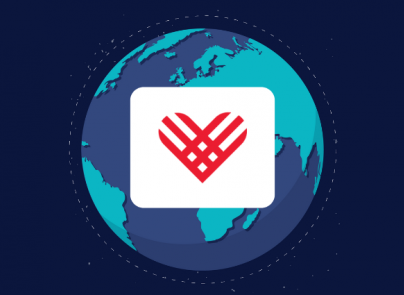To Kiss or Not to Kiss?
To Kiss or Not to Kiss?
This past week, the Russian President, Vladimir Putin, kissed a seven year old boy--on the stomach! Context: the President had bent down to ask the boy his name; the boy in embarrassment rolled up his T-shirt over his face thereby exposing his stomach; what else was a politician to do? Almost anything is the correct answer! Even hardened press reporters were "reported" to be astonished. It was weird.
But it brought to mind the whole etiquette of social kissing. The British, you see, tend not to. At least, that used to be the case. But fashions change and I understand that in London these days, among trend setting socialites, it has become the in-thing for (straight!) men to hug and kiss, aping the French and Italians who do it to excess. I'm spending a day or two in the capital city this summer on my way to see my first grandchild, so I may start practicing these next few weeks on my Mississippi friends!
Former US Secretary of State, Madeline Albright, in her Memoirs, recalls the confusion of kissing etiquette in Latin America. Some countries kiss on the left and some on the right, but which ones?
Believe it or not, there's a kissing guide website for American tourists visiting Europe: Paris has a four-kiss greeting, starting on the left--always! Brittany on the other hand follows a three-kiss pattern, and on the French Riviera (all that Mediterranean sun!) it can be as many as six! In the Netherlands, you always begin and end with the same check--the right; but in Belgium, as you might have expected, it's only one.
Then there's the "ten year older?" rule: if the one you're kissing is ten years older or more, you are expected to kiss some more! A recipe for tragedy to be sure.
The entry for Britain is hilarious, explaining that "the British as a rule don't kiss outside of the family" adding "that a handshake is thought to be sufficient." And it adds, "When the British ask how you are, they don't expect you to tell them!"
Holy Kissing
Which brings me to "Greet one another with a holy kiss." It occurs five times in the New Testament (Rom. 16:16; 1 Cor. 16:20; 2 Cor. 13:12; 1 Thess. 5:26; 1 Pet. 5:14). According to Justin Martyr (mid-second century) it was a standard part of the worship service. And Professor John Murray, a dour Scot, adds, "It betrays an unnecessary reserve, if not loss of the ardour of the church's first love, when the holy kiss is conspicuous by its absence in the Western Church."
Michael Penn, Religion Professor at Mount Holyoke, Massachusetts, has written an entire book on the subject of holy kissing in the early Church called, Kissing Christians: Ritual and Community in the Late Ancient Church (University of Pennsylvania Press, 2006). The early church employed a kiss in a variety of ways, baptism, Eucharist, everyday greeting, even martyrdom. Interestingly, the church became concerned about eroticism and kissing and may explain why the custom of "passing the peace" fell out of favor.
But kissing in our contexts, especially when the practice is not part of social custom, is fraught with difficulties. Imagine the scenes: pastors planting affectionate - overly affectionate - kisses on young ladies... Need I expand? Definitely a case for trouble! And the somewhat camp guy that you're struggling not to be suspicious over, do you? Don't you? It's all a little unnerving, don't you think?
So what should we do? Determine the timeless principle of which this is a cultural expression is the answer. Engage in what Justin Taylor has called somewhere, contextualized confessionalism--adapting our contextualization of the gospel without sacrificing its essential character and content. Christians should greet each other warmly and affectionately. Too often, we pass each other without so much as a greeting. It ought not to be!
But how?
The handshake. Not as simple as it looks. There are a variety of handshakes, each one expressing its own subtle (and sometimes less than subtle) nuances. Nigel Farndale, in a recent "leader" in The Daily Telegraph (02/07/2006) categorized them this way:
The Puller: where the handshake functions as a means of pulling the person out of the way so that you can get to the person you really want to speak to!
The Clamper: where you shake with one hand and firmly clamp the person's forearm or elbow, signaling control.
The Coverer: where you shake with one hand and cover it with the other, signaling trust.
The Crusher: where the shake is so firm there are risks of bone damage, but politeness insists you don't react with cries of pain. It signals manliness.
Then there are some others:
The Wet Fish: clammy palms limply given and even more limply accepted. It signals uncertainty and nervousness.
The Two Fingers: Usually offered because the hand is already holding a bunch of keys; or worse, they have just wiped some liquid off their noses and haven't had time to dispel the contents on their trousers (pants!).
The Presbyterian Thank You: only very occasionally encountered when grateful church members want to give the minister thanks in the form of financial reward. I've rarely encountered it in America, but more common in Northern Ireland. A case of the left hand not knowing what the right hand is doing. Transferring the contents to your pocket without looking at the value of the gift is an art-form learned with difficulty!
Other alternatives are: the high five, common enough among the young but decidedly off putting when attempted by the over forties. And hugging has made a come-back in some circles. Possibly, it never left others. Even here, there are some nuances worth pondering. A former TA of mine, now serving in the military, hugs so tightly that chest bones can be felt. It's all very manly, I think. But I've never attempted it myself, just been the recipient of it. An elder in the Mississippi delta whose manliness is beyond question, once hugged me following a sermon I preached and kissed me on the cheek, adding affectionately, "I love you, man!" I was still trembling three days later. Why is it, for example, that I'd never, never, hug Sinclair Ferguson but regularly (well, not that regularly) hug Ligon Duncan? Right! One is Scottish and the other a South Carolinian! It's all very complicated. One has to judge signals of approach: Shall I? Should I? Do I have to? Some are easy: arms outstretched, no hesitancy in the approach--it's going to happen, no matter what. Others are awkward: there's a corridor of uncertainty. You put out one hand, he puts out two.
Greeting One Another
The "Holy Kiss" signals for the New Testament the need for expressing in some tangible way our family identity as brothers and sisters in the family of God. "For just as the body is one and has many members, and all the members of the body, though many, are one body, so it is with Christ...Now you are the body of Christ and individually members of it" (1 Cor. 12:12, 27). One of the glaring omissions on the life of the contemporary church is fellowship--what the New English Bible accurately renders "sharing the common life" (to render koinonia in Acts 2:42). A body in which the blood doesn't circulate properly, where organs are not functioning in harmony with each other, is unhealthy by any definition. So it is in the church. We grow through fellowship. A church can exist without outward expressions of unity and love, but it will not grow or even function properly.
The "holy kiss" was meant to signal more than affection. It demonstrated a bond of the most intimate nature. It said, "we belong to each other as God's family." It is a fundamental need that will take effort on the part of Christians to foster and grow. It ought to be encouraged. It accounts for the feebleness of much of the modern church.





